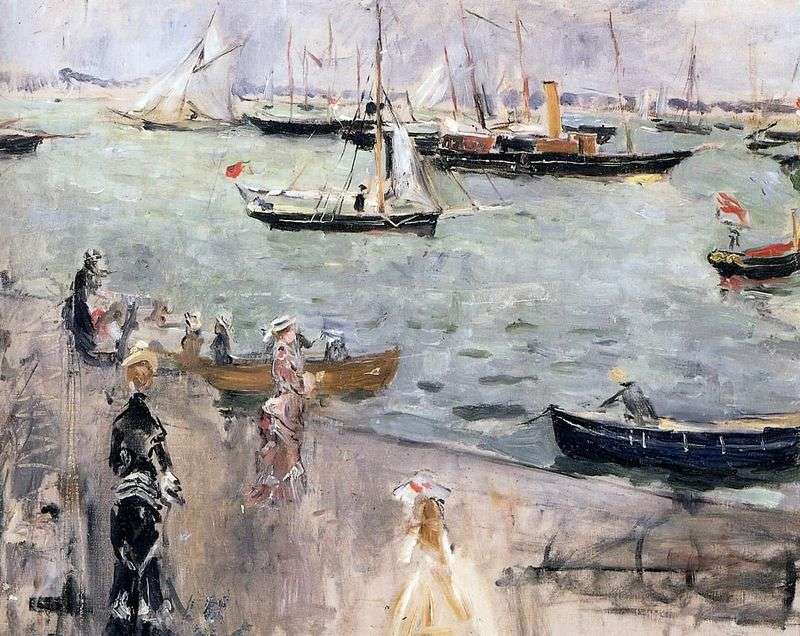
In 1875, Berthe Morisot married his brother Edward Manet Eugène. In the honeymoon the newlyweds go to England. They spend some time on the Isle of Wight, where Berthe Morisot will be happy to watch the incessant dance of the ships and the rhythmic, melancholic tide show.
The artist lives, enjoying happiness. Under the influence of Manet, she focuses on artistic pursuits and experiments. In “The Isle of Wight,” the lower right corner of the picture is intentionally left in its raw state: unfinished forms are a very characteristic feature of her canvases, especially from this period. The stroke here is more nervous and less calm. Her painting definitely breaks with conservative academism, and this gap is entirely conscious.
“The Isle of Wight” is a rather specific picture. Morisot seems to forget about the aesthetic canons that are obligatory in this painting genre, paying attention only to the visual aspect of the things she observes. The picture is sustained in light tonality, enriched with different shades of white. The soft brown color of the coast and the alarming gray sky surround the opal colored sea with light green color.
On the coast, near the pier you can see a few people dissolving in the landscape. The shape of a little girl in the foreground is made with two or three strokes. The hulls and sails of the boats are painted in the same colors as the women’s dresses. After a period of influence Corot, and then Mane Bert Morisot develops his own style, in which freedom is combined with the accuracy of perception.
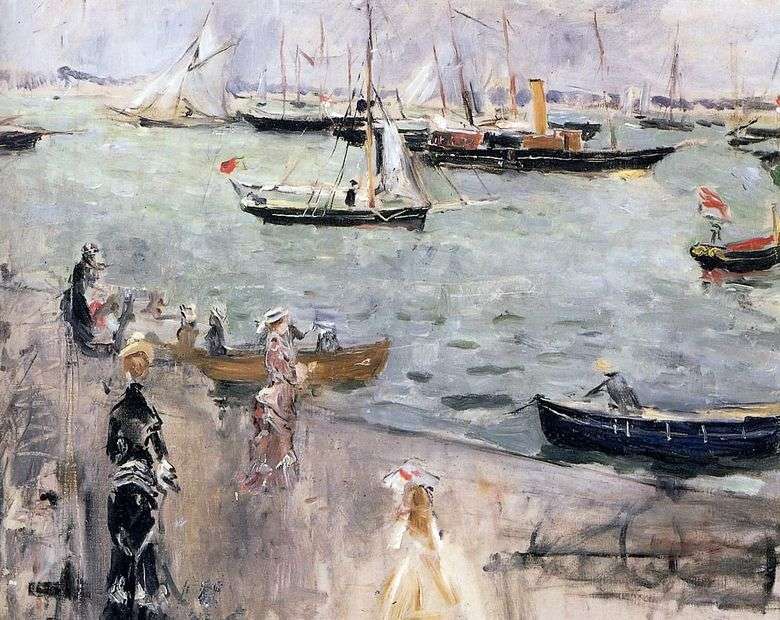 Isla de Wight – Bertha Morizo
Isla de Wight – Bertha Morizo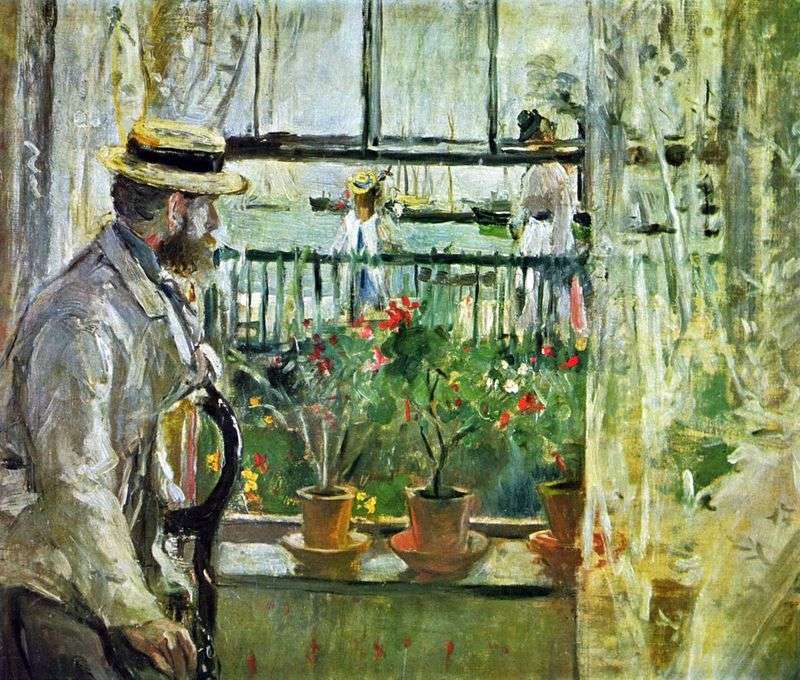 Eugene Mans on the Isle of Wight by Berthe Morisot
Eugene Mans on the Isle of Wight by Berthe Morisot Summer by Bertha Morizo
Summer by Bertha Morizo Ile de Wight – Berthe Morisot
Ile de Wight – Berthe Morisot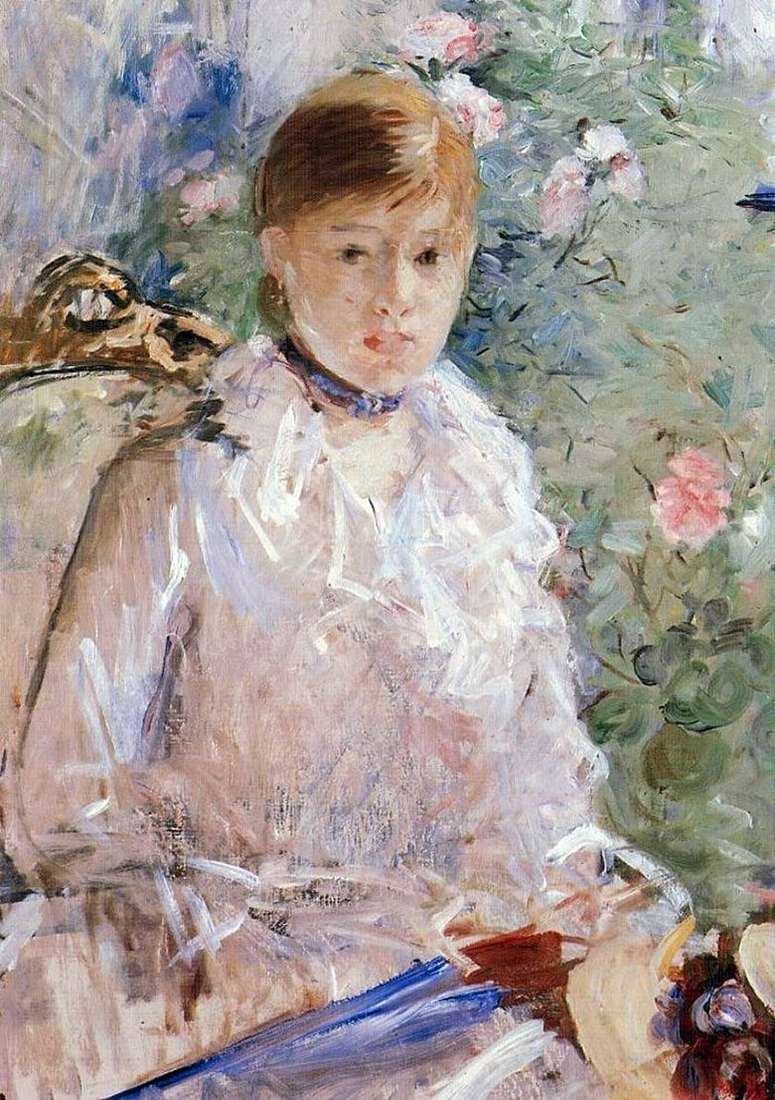 Verano – Bertha Morizo
Verano – Bertha Morizo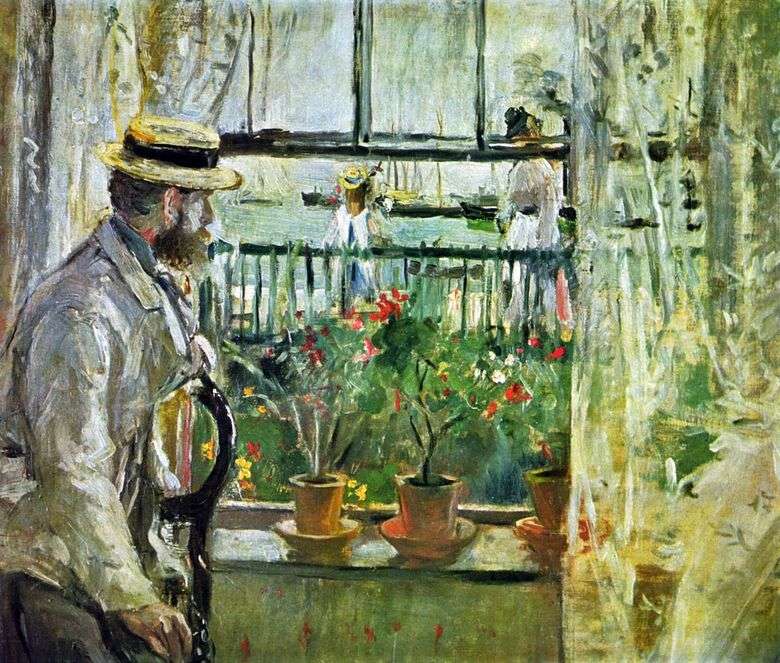 Eugene Mans en la Isla de Wight – Berthe Morisot
Eugene Mans en la Isla de Wight – Berthe Morisot Eugene Manet sur l’île de Wight – Berthe Morisot
Eugene Manet sur l’île de Wight – Berthe Morisot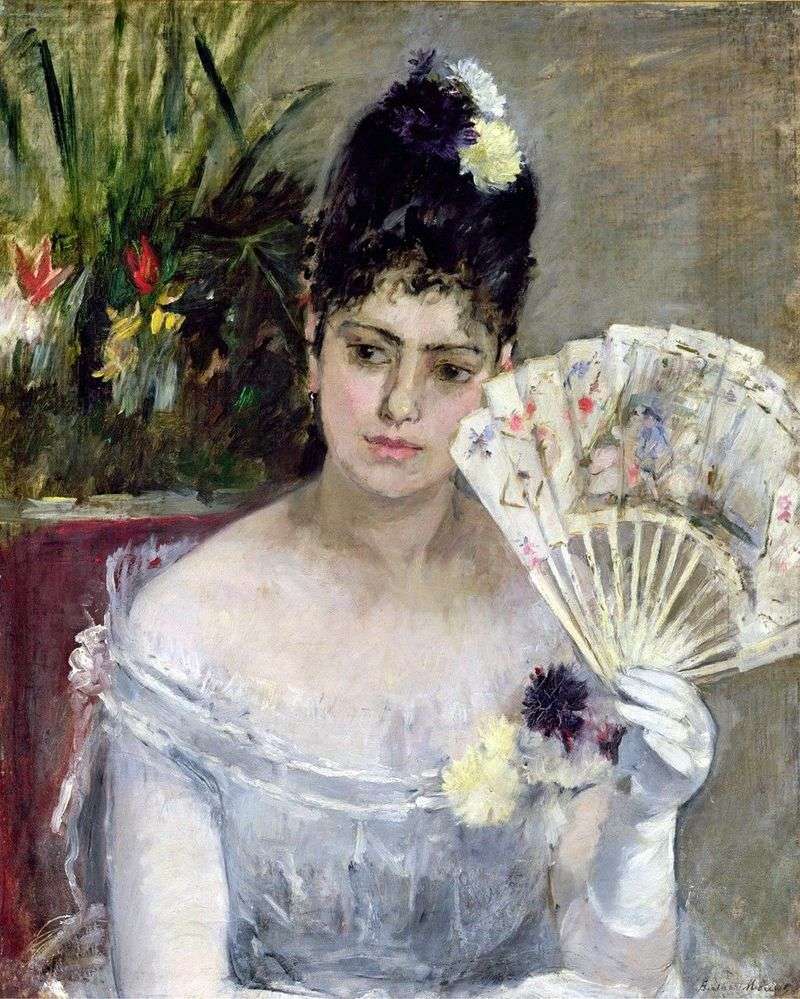 At the ball by Bertha Morizo
At the ball by Bertha Morizo